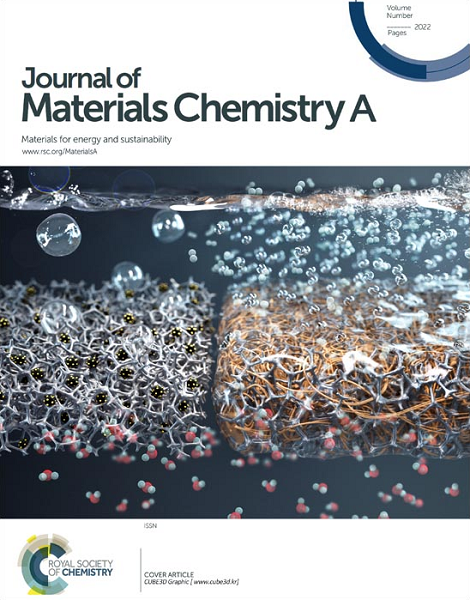Phosphonic acid grafted polybenzimidazoles containing pyridine for stable high-temperature proton exchange membrane fuel cells
IF 10.7
2区 材料科学
Q1 CHEMISTRY, PHYSICAL
引用次数: 0
Abstract
The phosphoric acid (PA) leakage problem has been a major constraint in the practical utilization of PA-doped polybenzimidazole for high-temperature proton exchange membranes (HT-PEMs). Increasing the retaining ability of the proton exchange membranes for free PA while decreasing the amount of PA doping seems to be a viable approach to reduce the possibility of PA leakage. In this work, the mild ester exchange reaction was introduced for the first time to prepare phosphonic acid grafted polybenzimidazoles containing pyridine (g-p-X). The phosphonic acid groups act as transport sites for proton conduction, effectively reducing the need for free PA in g-p-X membranes. Meanwhile, the pyridine immobilizes a portion of the PA through strong ionic interactions, and the membranes exhibit a high PA retention capacity. Among them, the g-p-20 membrane reachs 84.6% PA retention after the 120 h test. Thanks to the dual effects of the phosphonic acid groups and pyridine, the g-p-20 membrane shows a proton conductivity of 42 mS cm-1 at 180 oC without humidification. Moreover, with only 175.3 wt% PA doping, its highest single cell power density achieves 951 mW cm-2 (180 oC). Notably, after 120 h of steady operation at 140 oC, the voltage decay rate of the g-p-20 is only 10 μv h-1. This work presents a viable concept for addressing the problem of PA leakage from HT-PEMs in long-term operation.用于稳定的高温质子交换膜燃料电池的含吡啶的膦酸接枝聚苯并咪唑
磷酸(PA)泄漏问题一直是将掺杂 PA 的聚苯并咪唑用于高温质子交换膜(HT-PEM)的主要制约因素。提高质子交换膜对游离 PA 的保留能力,同时减少 PA 的掺杂量,似乎是减少 PA 泄漏可能性的可行方法。在这项工作中,首次引入了温和的酯交换反应来制备含吡啶的膦酸接枝聚苯并咪唑(g-p-X)。膦酸基团是质子传导的传输位点,可有效减少 g-p-X 膜对游离 PA 的需求。同时,吡啶通过强离子相互作用固定了部分 PA,使膜表现出较高的 PA 保留能力。其中,g-p-20 膜在 120 小时测试后的 PA 保留率达到 84.6%。在膦酸基团和吡啶的双重作用下,g-p-20 膜在 180 oC 时的质子电导率为 42 mS cm-1,无需加湿。此外,只需掺杂 175.3 wt% 的 PA,其最高单电池功率密度就能达到 951 mW cm-2(180 oC)。值得注意的是,在 140 oC 温度下稳定运行 120 小时后,g-p-20 的电压衰减率仅为 10 μv h-1。这项工作为解决 HT-PEM 长期运行中的功率放大器泄漏问题提出了一个可行的概念。
本文章由计算机程序翻译,如有差异,请以英文原文为准。
求助全文
约1分钟内获得全文
求助全文
来源期刊

Journal of Materials Chemistry A
CHEMISTRY, PHYSICAL-ENERGY & FUELS
CiteScore
19.50
自引率
5.00%
发文量
1892
审稿时长
1.5 months
期刊介绍:
The Journal of Materials Chemistry A, B & C covers a wide range of high-quality studies in the field of materials chemistry, with each section focusing on specific applications of the materials studied. Journal of Materials Chemistry A emphasizes applications in energy and sustainability, including topics such as artificial photosynthesis, batteries, and fuel cells. Journal of Materials Chemistry B focuses on applications in biology and medicine, while Journal of Materials Chemistry C covers applications in optical, magnetic, and electronic devices. Example topic areas within the scope of Journal of Materials Chemistry A include catalysis, green/sustainable materials, sensors, and water treatment, among others.
 求助内容:
求助内容: 应助结果提醒方式:
应助结果提醒方式:


